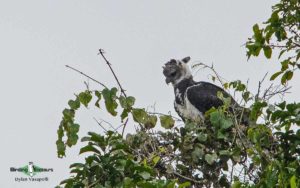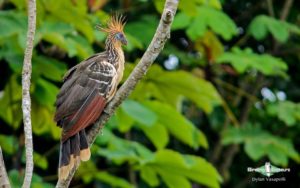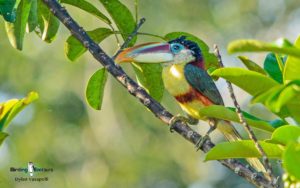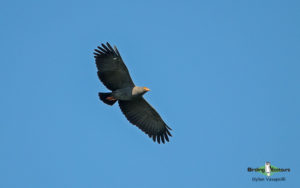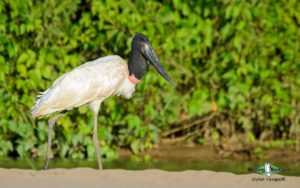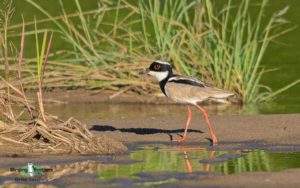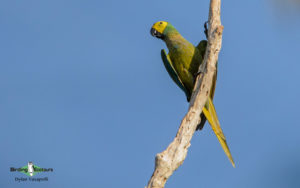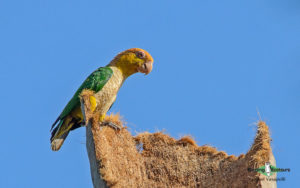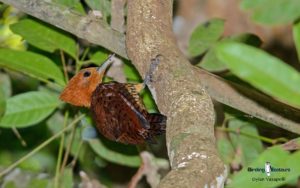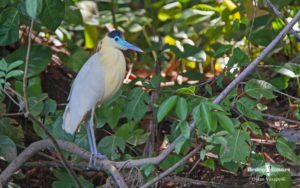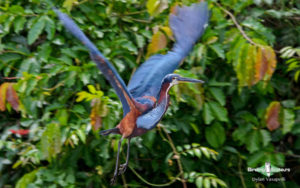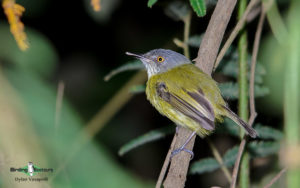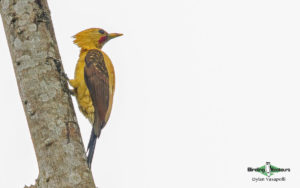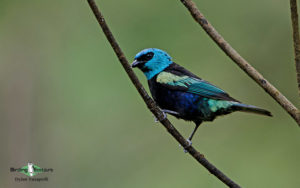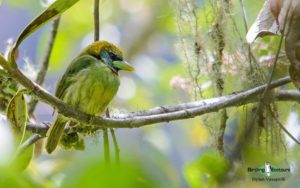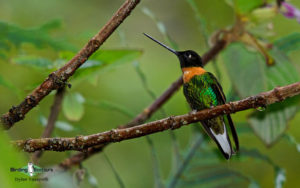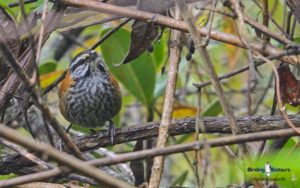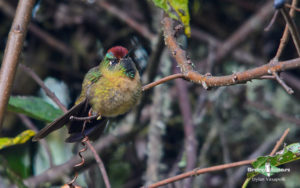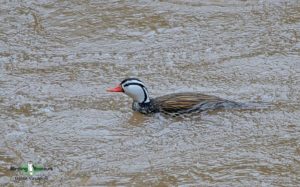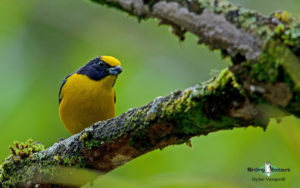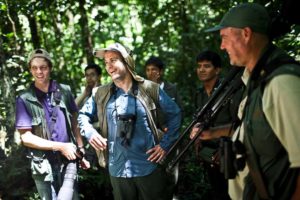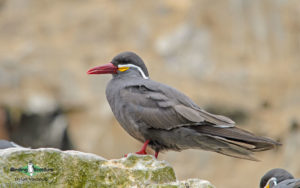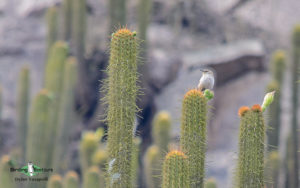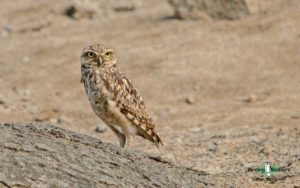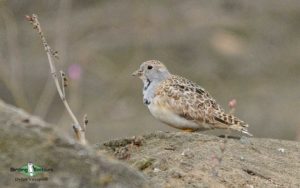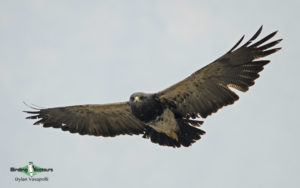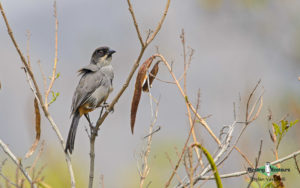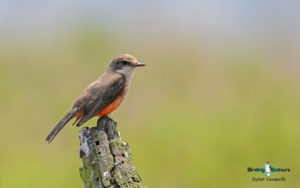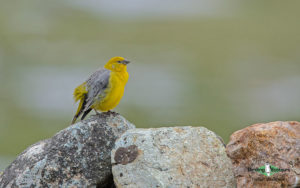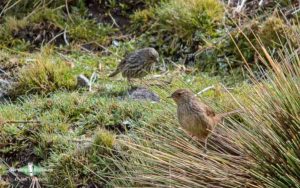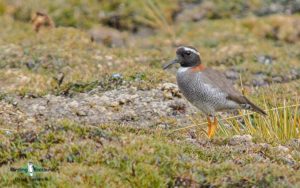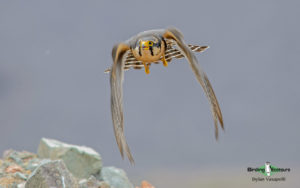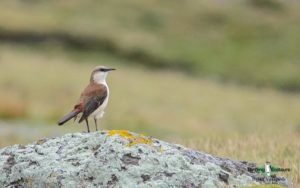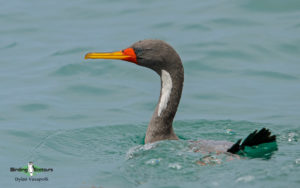Go to All Blogs | Neotropical Blogs | Peru Birding Tours | All our birding tours
Birding Ecotours, was one of five teams that were invited to participate in the World Birding Rally, to be held in southern Peru over December 2013. It was a great honour to have been invited to this auspicious event and we were greatly looking forward to not only the great birding this country has to offer, but to the obstacle of battling it out with four other highly experienced neotropical birding outfits!
Report by Duan Biggs, Dylan Vasapolli and Niall Perrins
Arrival and Lima
We all arrived safely in Lima and began the day with a birding stop near the port ‘La Punta’ in Lima itself, a special spot that Eduardo Ormaeche, our Peruvian expert guide, visits on Birding Ecotours trips to Peru. It was a great spot to get a quick feel for the South American waders and seabirds: Least, Western, and Semipalmated Sandpipers, Blackish and American Oystercatchers, Elegant Tern, Laughing, Belcher’s and a couple thousand (really!!!) of Franklin’s Gulls. The highlights were certainly views of the exquisite Inca Tern and the Peruvian Booby, and sterling views of a skimming Black Skimmer nearby.
In the evening we had the first formal function of the rally – we learnt that amongst others we are competing against Daniel Lane, co-author of the latest Peruvian Field Guide. Eduardo, our expert Peru guide, was unfortunately not available for this rally, as he is off guiding a tour. Our collective Peruvian and tropical South American experience is quite limited, so having met our competitors we left dinner for a long night of hard studying before rally proceedings commence in the jungles of Amazonia tomorrow.
Amazonia: the rally begins
A 90-minute flight from Lima had us landing in Puerto Maldonado before transferring to a nearby Inkaterra Lodge situated in Reserva Amazónica, part of the broader Tambopata National Reserve, where the rally would commence. First stop was the Inkaterra restaurant in Puerto Maldonado, where we topped on some much needed cold water and a snack. But we hardly had time to sit down when the exciting Amazonian birding began: Russet-backed Oropendolas were chattering overhead, loud squawks in the distance turned out to be Chestnut-fronted Macaws that did an obliging fly-by, we got onto our first Social Flycatcher and Great Kiskadee, excitement came with a Straight-billed Woodcreeper at close range, our first of very many Silver-beaked Tanagers posed for delightful views, and a distant flash of yellow was a Saffron Finch – an introduced population in Puerto Maldonado.
It was time to head to the port of Puerto Maldonado, where we got on our boats to Inkaterra Amazónica – our home for the next four nights. Over some Pisco Sours, Manuel Bryce ‘Manuko’, the Director of the Birding Rally Challenge, and the judges gave us our instructions for the birding rally, and we met our truly expert local guide – Jesus Ghlemm. Plans were made, and we would be off the next morning to Lago Valencia, and a bit of land used for Brazil nut farming that still had some good tracts of Terra Firme forest.
Lago Valencia and Harpy Eagle
Sun was rising over the Rio Madre de Dios as we made our way downstream towards Lago Valencia. First up were good numbers of Plumbeous Kites, followed by early-morning Chestnut-fronted, Scarlet, and Red-bellied Macaws. Niall thought he had a different bird of prey perched up on the bank, and whilst trying to get a handle on whether it was a Plumbeous or a Slender-billed Kite, or something else, Jesus screamed out: Harpy Eagle! It was the only one seen by any of the teams during the entire rally. We all relished views of this rare and very difficult-to-locate megabird. It was on the creek that connects to Lago Valencia. This creek provides the quintessential Amazonian birding experience on a little river with overhanging vegetation. Along here we had the mind-boggling Long-billed Woodcreeper, Bare-necked Fruitcrow, an awesome Laughing Falcon flying over, plus an all-colourful Troupial. NP had a Horned Screamer disappear from a perch overhanging the creek, before we ran into the first of the extraordinary, hissing Hoatzins.
The legendary Harpy Eagle
The unique ‘hissing’ Hoatzin
We arrived at the Brazil Nut forest at Lago Valencia, where we were all given our Brazil Nut helmets (it was Brazil nut season) before heading into the forest. We initially were not sure why we had to wear the helmets, but when a Brazil Nut thundered down and shook the earth to its core a mere few metres away from Niall – we understood their value! It was a hot, humid day in the jungle, and clouds of mosquitoes followed each of us. Despite the heat we managed to encounter a few bird parties with some good new species, including Peruvian Warbling and Southern Chestnut-tailed Antbirds, a massive Lineated Woodpecker, and the impressive Rufous Motmot. The highlight of our time in the Brazil Nut forest was most certainly the spectacular Pavonine Quetzal. We returned to the boat launch for lunch, where we had some protection from the marauding flocks of mosquitoes. We returned to the lodge as the sun was setting over the Rio Madre de Dios, with groups of macaws and oropendolas returning to their evening roost. Before returning to the lodge a Ladder-tailed Nightjar was added to the list.
Canopy Tower and the Várzea forest
Today was our day to bird the canopy tower and trails around the Inkaterra Amazónica Lodge. We started the day at the 40m-high canopy tower. Here we were treated to Red-bellied and Chestnut-fronted Macaws flying over and delightful views of the impressive Curl-crested and Ivory-billed Aracaris at close range. Mealy Amazon and Blue-headed Parrot added to the parrot splendour, as did good views of Dusky-headed Parakeet. We tried hard for the Striolated Puffbird that has been recorded from the tower, but with no luck. We completed the exhilarating canopy walk and added good views of Thrush-like Wren to our ever-growing total.
The beautiful Curl-crested Aracari
Slender-billed Kite in flight (Dylan Vasapolli)
After the tower it was time to hit the Várzea forest, where the humidity and heat was as intensive as the clouds of mosquitoes following us around in the jungle. The birding had slowed down a little in the midday heat, but we managed to pull out a couple of good species, including stellar views of Band-tailed Antwren in the flooded forest. A tad later we ran into one of the other rally teams, and together with them we enjoyed views of Red-necked and White-throated Woodpecker as well as White-necked Jacobin. Thereafter it was back into the dark forests again. Our very sweaty efforts were rewarded with views of the skulking Pectoral Sparrow, Green-and-rufous Kingfisher, and Bluish-slate Antshrike. In addition, we managed to get good looks of both male and female Pink-throated Becard.
We returned to the lodge for a well-deserved lunch, with a Grey-breasted Sabrewing and Fork-tailed Woodnymph amusing us as they had their own lunch at the flowering plants outside of the restaurant. After lunch birding around the lodge grounds produced White-bellied Tody-Tyrant and good views of White-flanked Antwren. Unfortunately, after lunch as well, DB had clearly contracted a nasty Amazonian stomach bug and was knocked out for the afternoon, whilst a nurse took care of him. NP and DV with Jesus continued their activities, and their efforts were rewarded with some cracking birds. Highlights included Jabiru, White-bellied Spinetail, the drab Yellow-browed Sparrow, Little Ground Tyrant, and the striking Pied Plover, not to mention an excellent fly-over of two Blue-headed Macaws, one of the tougher macaw species to track down.
One of the three Jabirus we managed to find
The awesome Pied Plover
The Macaws of Lago Sandoval and Hacienda Concepción
The 4km walk up to Lago Sandoval passes through lowland forest and ultimately a small patch of bamboo before arriving at the lake. The highlight of this walk must surely be the roosting and nesting macaws at close range to the trail. These included Blue-and-Yellow, Scarlet, Red-bellied, and Red-and-green Macaws, amidst groups of White-bellied Parrots. Even the numbers of non-birding tourists en route to the lake stopped to marvel at the splendour of these Amazonian creatures. As we approached the lake we encountered a bird party in the bamboo, which included Cream-coloured Woodpecker and the impressive and scarce Ringed Woodpecker.
Red-bellied Macaw
White-bellied Parrot
The rarely seen Ringed Woodpecker – A great find!
We climbed into our little boat, which Jesus steered along the lake shore, giving good views of Capped Heron, Sungrebe, and Greater Ani, as well as a calling Point-tailed Palmcreeper. The birding highlight of the boat ride was surely the Agami Heron, which we flushed from close quarters for mind-boggling views. Many a Sungrebe were seen skirting the water’s edge. The non-birding highlights of our boat ride on Sandoval without doubt were a close view of an inquisitive giant otter as well as a noisy group of red howler monkeys – howling away in the trees that towered above the lake.
Capped Herons were always a welcomed sight!
Our breathtaking Agami Heron
It was time to head back into the forest, again in the heat of the day. The birding started quietly, but it was not too long and DB picked up on a group of Dwarf Tyrant-Manakins in the dark undergrowth. Somewhat further on an active bird party included Little Woodpecker, Olivaceous Woodcreeper, Plumbeous Antbird, and a cracker of a Black-faced Cotinga. A little further on the trail we were treated to a good sighting of Silvered Antbird around some ant activity.
We then started on the trail across to Hacienda Concepción. Here we experienced a greater density of mosquitoes than anywhere in Amazonia, but the birds were worth it. DB got onto a Round-tailed Manakin, but unfortunately the others missed it. We also added Reddish Hermit to our list, shortly after nearly stepping on a Bluish-fronted Jacamar – it was so close to us. Closer to the Hacienda Concepción we had good looks at Plain Antvireo and at the immaculately-coloured Lemon-throated Barbet. Next up was a hearty lunch at Hacienda Concepción before doing some birding in another little rowboat on a nearby overgrown lake.
This lake treated us to a true birding splendour: Hoatzins by the dozen, stellar views of the aptly-named Spotted Tody-Flycatcher, White-throated Jacamar perched out in the open, Chestnut-vented Conebill and Bar-breasted Piculet in a feeding party, and White-necked Jacobin feeding close to the boat. We were even treated to a mammal sighting the in the form of a Coati!
The lively Spotted Tody-Flycatcher
Amazonia to the Cusco Highlands
On our final morning in the Amazon we tried once more to add a few birds to our list from the canopy tower. We were treated to views of Amazonian and Blue-crowned Trogons as well Blue-crowned Motmot, in addition to further cracking sightings of the aptly-named Curl-crested Araçari. But soon it was time to get on the boat towards Puerto Maldonado, and en route we had further sightings of the impressive Pied Plover. As soon as we hit ground in Puerto Maldonado, all teams were all systems go to get as many species as possible added to the rally lists. Whilst travelling to the airport we picked up Red-breasted Blackbird and a feral population of Saffron Finch. As soon as we had checked in at the airport, we got onto a little three-wheeled tuk-tuk to explore the area around Puerto Maldonado – this added Black-billed Seed Finch, Double-collared Seedeater, Groove-billed Ani, and Blue-black Grassquit to our ever-growing rally list. Unfortunately a midday tropical storm put the brakes on the hour we had for birding, so we didn’t reach the point on the road where another team picked up Limpkin and Wattled Jacana on the same track we had stumbled upon! Back at the airport we had Burrowing Owl and Southern Lapwing from the airplane.
A beautifully coloured Cream-colored Woodpecker!
The Cusco Highlands
As soon as we had landed in Cusco we were on our way to a few hours of high-altitude birding, before taking the train from Ollantaytambo to Machu Picchu. A stop at Lago Puray produced a flurry of new birds: Andean Flicker, Short-billed Pipit, Chiguanco Thrush, and Grassland Yellow Finch. A scan of the birds on the lake delivered Yellow-billed Pintail, Andean Duck, Puna, Yellow-billed, and Cinnamon Teals, and White-tufted Grebe. Closer to shore we enjoyed views of Collared Plover, Lesser Yellowlegs and Wilson’s Phalarope feeding in the shallows. It was time to head inland up a dry creek to find some non-aquatic highland species for our rally list. Species encountered included Ash-breasted and Peruvian Sierra Finches, Band-tailed Seedeater, Black-throated Flowerpiercer, and a fly-by Aplomado Falcon and Mountain Caracara. We also added two impressive hummingbirds to our list: Green-tailed Trainbearer and Giant Hummingbird.
We then moved on to the next lake, ticking Black-chested Buzzard-Eagle and Variable Hawk at a viewpoint. The next stop was a lake at slightly lower elevation. It did not take us long and we had our first Wren-like Rushbird and Many-coloured Rush Tyrant. As we moved further along the lakeshore we found some mudflats that held some waders – new for our rally lists were Least Sandpiper and Baird’s Sandpiper, and we also had a Plumbeous Rail walking along the mudflats.
As darkness set over these ancient highlands of the Incas we boarded our train in Ollantatambo for the legendary train ride to Machu Picchu. We spent the train ride preparing for the last day and a half of the rally, based at the fabulous Inkaterra Machu Picchu Pueblo Hotel.
The Grand Finale at Machu Picchu
It would be exceedingly difficult if not impossible to find a more hauntingly spectacular location for the final day and a half of a birding rally than Machu Picchu. We started at 5:00am sharp with our very experienced local guide Braulio, ascending the trail from Aguas Calientes town up to the Machu Picchu citadel and temples. Birding here was a completely different experience from the jungles of Amazonia; we actually got visuals of most species and did not have to identify them by voice – we certainly saw a lot more individual birds, but our overall species count was significantly lower. The frenzy of colours started in the hotel grounds with Chestnut-breasted Coronet, Sparkling Violetear, and Blue-necked and Silver-backed Tanagers. As we strolled down to the bridge and the start of the trail, Braulio pointed us to an impressive Andean Cock-of-the-rock female nesting on a rock face on the banks of the Urubamba River. The boulders of the fast-flowing torrent were dotted with Torrent Tyrannulets and Black Phoebes.
A beautiful Blue-necked Tanager
Next stop was an open patch of forest and garden near the museum. Here we had a feast of hummingbirds, including Green and Sparkling Violetears, Collared Inca, and Green-and-white Hummingbirds. We also enjoyed views of a range of Tanagers, including Blue-necked and Blue-and-black. Next we started climbing up the steep, winding trail to the Machu Picchu ruins, while new birds kept coming. Memorable sightings included the very colourful Citrine Warbler, Blue Dacnis, the exquisitely-marked petite Barred Becard, Andean and White-eared Solitaires, and Highland, Yellow-bellied, and Sierran Eleanias. The highlight surely was the stellar views we had of a pair of Versicolored Barbet – what splendour! The birding was so busy and hectic, we couldn’t help running into one of the Birding Rally Challenge teams, as the two bird parties we were following converged. We reached the control gate to the ruins, where we ran into yet another one of the teams, who were onto an Orange-breasted Falcon, which they obligingly shared with us.
The awesome Versicolored Barbet
The ‘omissa’ race of Collared Inca
Next up was climbing up to the ruins proper, but we hardly had time to take a team photo with the Machu Picchu ruins in the background before we pressed on into the higher-altitude forests above the ruins. The birding here was as impressive as the awe-inspiring scenery, complete with Machu Picchu. First, we got onto a few very confiding Inca Wrens. This was followed not long thereafter by a White-throated Quail Dove, which popped across the path in front of us. A passing arboreal group of Red-crested Cotingas delighted all. Our hummingbird spectacle continued, with both Purple-backed and Rufous-capped Thornbills, and Amethyst-throated Sunangel in quick succession. We passed through the Inca Gate, and from a ‘Mirador’, or viewpoint, we picked up Emerald Toucanet and Grey-breasted Mountain Toucans vocalising. Soon it was time to descend, but not before we were treated to cracking views of a White-rumped Hawk soaring above. We descended these legendary ruins in a bus in time for some more birding on the lower slopes. Here we added visuals of Andean Guan to our list, before returning to the Inkaterra Machu Picchu Pueblo Hotel after a fantastic and most memorable day.
The illustrious (and noisy!) Inca Wren
Rufous-capped Thornbill – an unexpected highlight!
White-capped Dippers in the rain
Our final day of the rally at Machu Picchu was dampened by a heavy downpour, which lasted until 10:00am, with the final whistle of the rally due to blow at 12:00 midday. It was a tough and wet morning, but despite the weather we managed to add views of Masked Fruiteater and Blackburnian Warbler to our list, as we made our way down to the Mandor Waterfalls. At a teahouse that provided some cover from the ongoing deluge we ran into James Currie, a fellow South African filming for one of his episode of Birding Adventures. After ticking Long-tailed Sylph from the cover of the teahouse, it was time to brave the rain to notch up a few additional species. Thanks to a persistent search by Dylan in the pouring rain we located a pair of White-capped Dippers high up on a cliff-face waterfall. A group of Inca Jays added some colour to an otherwise grey and wet morning. As we returned to our hotel the weather started lifting, and the birds started reappearing. We added Broad-winged Hawk to our lists as well as Fawn-breasted Tanager. We returned to our hotel with a spot of time left to dash into the forest above the hotel to search for a last few additional ticks to add to our rally tally. And what good ones they were: Blue-naped Chlorophonia and Thick-billed Euphonia feeding in the lodge gardens, the sizeable Andean Motmot, and the petite little Cinnamon Flycatcher.
A stunning male Torrent Duck
Some good views of Thick-billed Euphonia were had!
We ended the rally with a very respectable score of 389 species – significantly more than the South African team of the year before. We ended in 4th place out of 5 teams, and only 20% behind the winning teams, which all had decades of Neotropical experience. If only our star Peruvian guide Eduardo Ormaeche is not out on tour again for the next rally, we can really give a high place a good run! Considering the limited Neotropical and Peruvian experience in our team, we felt that we did Birding Ecotours and South Africa proud with our efforts in the rally.
Dylan Vasapolli, Niall Perrins, and Duan Biggs
TEAM: Birding Ecotours, South Africa
Team Birding Ecotours – from left to right; Dylan Vasapolli, Duan Biggs, Jesus Ghlemm, Niall Perrins. (Ernesto Benavides)
Birding Ecotours Post Rally Birding
After the rally we returned to Lima, exhausted but happy with our performance in the rally. We had hardly arrived at our hotel when we headed to the seashore near the hotel in Miraflores to enjoy the spectacle of the Inca Tern roost at close range. What birds these are – one of the most exquisitely marked birds on the planet!
The magnificent Inca Tern!
Lomas de Lachay National Reserve
It was another early start to Lomas De Lachay, about 100km north of Lima. The first section we visited produced Oasis Hummingbird, Chestnut-throated Seedeater, and Bare-faced Ground Dove. A little deeper into the hills we had Cactus Canastero after some searching, Greyish Miner, and cracking views of Burrowing Owl.
It was time to visit the main section of the reserve, accessed off the Pan American Highway. On the entrance road we had the petite but attractive Least Seedsnipe, Coastal Miner, Raimondi’s Yellow Finch, the colourful Peruvian Meadowlark, Purple-collared Woodstar, and Band-tailed Sierra Finch. In the reserve proper we had views of the subtly-coloured Mountain Parakeet, Croaking Ground Dove, Collared Warbling Finch, Peruvian Sheartail, and Peregrine Falcon, not to mention good numbers of Black-chested Buzzard-Eagles of various ages.
After this ticking fest we travelled through to Santa Eulalia, in the foothills of the Andes, our base for the next two nights.
Cactus Canastero is a restricted Endemic in Peru. What a great bird!
Burrowing Owls are always a favourite!
A charismatic Least Seedsnipe perched sentinel
Santa Eulalia
An early 4:30am start saw us making our way up the Andes from 800m above sea level to 3500m. Our first stop was the tunnel, where we had Great Inca Finch – what a stunning bird! At this site we also picked up a pair of attractive White-browed Chat-Tyrants. A little higher up we were treated to great views of Andean Swift, and we also picked up Mourning Sierra Finch, Greenish Yellow Finch, American Kestrel, and a truly spectacular Black-chested Buzzard-Eagle fly-by.
At a grove of trees surrounding a bee farm we were startled by the bright colours of the Southern Yellow Grosbeak – it looked more like a bird of the Amazon jungles than of the dry country of the western slopes of the Andes. Around this grove of trees we also added Black-necked Woodpecker, Streak-throated Bush Tyrant, and Blue-and-yellow Tanager to our lists.
Black-chested Buzzard-Eagle from above!
We climbed higher still to the stakeout for the Rufous-breasted Warbling Finch. Searching for the warbling finch, we encountered a range of species, including two hummingbirds, Black Metaltail and Bronze-tailed Comet as well as the strikingly adorned Pied-crested Tit-Tyrant, joined a little later on by Yellow-billed Tit-Tyrant and Rusty-bellied Brush Finch. It took some searching, though, before we finally managed to encounter the warbling finch.
On our return to Santa Eulalia we stopped along the Santa Eulalia River, where we enjoyed close-up views of Scrub Blackbird and the small and non-descript Southern Beardless Tyrannulet. The gorgeous Vermilion Flycatchers were common on the outskirts of town. We returned to Santa Eulalia early for much-needed sleep of recovery after an intensive rally and post-rally birding, to prepare for yet another early start.
The Rusty-bellied Brush Finch is characteristic of the Andes.
The female Vermilion Flycatcher
Marcopomacocha
Another early start saw us heading up on one of the most infamous of Andean roads – the Carretera Central up the Andes from Lima to Marcopomacocha. We all breathed a sigh of relief when we exited the Carretera Central onto a side road that climbs even higher into the Andes. The only thing that surpassed the serene mountain scenery was the spectacular birding. First up we had Buff-breasted Earthcreeper, shortly followed by Black Siskin, the handsomely-coloured Bright-rumped Yellow Finch, and our first White-winged Cinclodes. Climbing further into the high Andes, we had both Streak-throated and Junin Canasteros as well as Slender-billed Miner.
We arrived at the site for one of our two main targets, the enigmatic Diademed Plover. It was not long before Dylan flushed a Puna Snipe, which we all enjoyed a good look at. The call of Puna Tinamous echoed from a distant mountain slope. Upon approaching, we managed to locate them for good, but distant, views. We continued searching this wetland downstream, and within a few minutes – there it was: Diademed Plover in all its splendour! We enjoyed observing and photographing this little marvel for a few minutes, before it was time to move on. We also enjoyed good views of White-fronted Ground Tyrant and flushed a Grey-breasted Seedsnipe in the process.
A stunning male Bright-rumped Yellow Finch
The Junin Canastero; an uncommon Endemic
The highly prized Diademed Sandpiper-Plover. A definite highlight!
Shortly after our Diademed Plover splendour, a pair of Aplomado Falcons were chasing a Dark-winged Miner, before perching in the road in front of us. This spectacle was followed by more views of Dark-winged Miner (not being hunted), Andean Goose, Taczanowski’s Ground Tyrant, Bar-winged Cinclodes and the endemic Black-breasted Hillstar.
We arrived at the next wetland, when Juan Manuel, our driver, remarked on how the rain and snow clouds were building up. Birding thus had to be done quickly and effectively. Our sightings kicked off with a White-winged Diuca Finch. Then we descended down into the lower part of the wetland to begin our search for the cinclodes of cinclodes: the critically endangered and rather gigantic White-bellied Cinclodes. DB spotted the bird perched on a distant rock, before it obligingly flew in our direction, offering marvellous views. This was in the nick of time, because as we returned to our Toyota for lunch, the snow had started falling. Driving back on the Carretera Central, the Andean slopes on which we had all the fabulous birding had turned white. We returned to Lima in the afternoon, content with our Andean birding.
Aplomado Falcon in hot pursuit of a Dark-winged Miner
The rare and threatened White-bellied Cinclodes
Pantanos de Villa Wildlife Refuge, Pucasana, and Puerto Viejo Beach
Our last day of birding in Peru was fairly relaxed, with a 6:00am start. Our first stop was the lakes and beach at Pantanos de Villa – a real hotspot, into which our driver Juan Manuel organised entrance. Here we had Yellow-crowned and Black-crowned Night Heron, Yellow-hooded Blackbird, both Great and Pied-billed Grebes, and visuals of Wren-like Rushbird and Many-colored Rush Tyrant. Also present at this site were Least and Semipalmated Sandpipers, Greater Yellowlegs, American Oystercatcher, Elegant and Sandwich Terns, and over 200 Black Skimmers. While we were enjoying all of this, a Cinereous Harrier hunted over the wetlands in the distance.
Pucasana is a picturesque seaside village nestled between the cliffs. Here we picked up the endemic Peruvian Seaside Cinclodes, and groups of Humboldt Penguins, named after the nearby Humboldt Current, swam by. A boat ride out of the Pucasana harbour was a real treat, and here we had great views of Surfbird and great numbers of Guanay and Red-legged Cormorants at really close range. Getting close to a large breeding colony of Peruvian Boobies amidst hundreds of Inca Terns is an experience not to be forgotten. Our final stop of our post-rally trip was Puerto Viejo Beach, where we enjoyed good views of the delightful Peruvian Thick-knee and picked up Grassland Yellow Finch. Our birding was rounded off with a fitting beach-side lunch in Puerto Viejo.
A beautiful Red-legged Cormorant off Pucasana
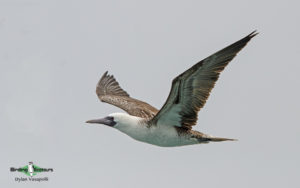
A Peruvian Booby flying alongside the cliffs they breed on, off Pucasana
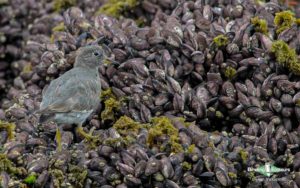
A Surfbird feeding on the rocky shore

